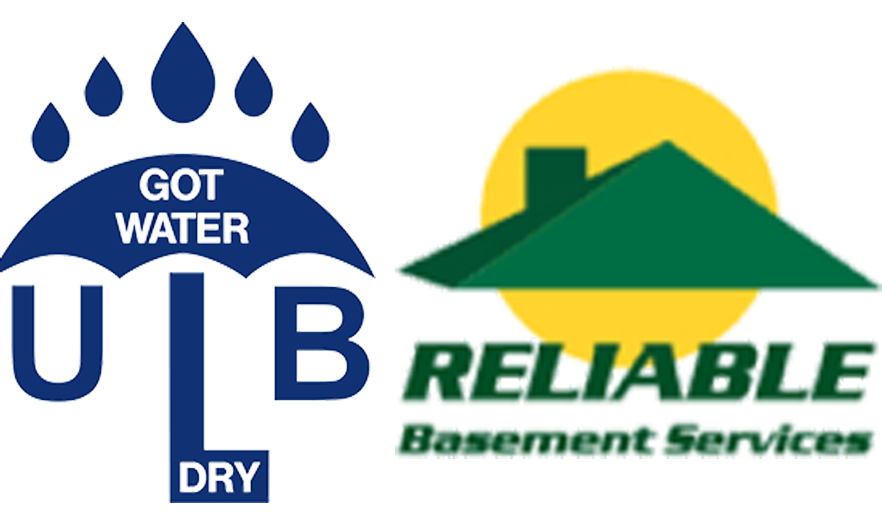Don’t be caught unprepared as winter’s snow gives ways to spring rain storms.
Most home owners are un-aware of the nature of rain waters migration around their house until they encounter the nasty effect of basement seepage. To Better understand how water moves around your homes foundation let’s take a brief look at the “Clay bowl theory”.
When a home is constructed the compacted soil is excavated to provide room for the foundation. A typical is poured in two separate phases. First the footer or base of the wall is poured. In most cases this is a 12″ wide by 18 to 24″ deep slab of concrete. After this concrete has reached the green stage, meaning it is soiled enough to support the weight of the foundation wall but not yet 100% cured out, the foundation wall is poured with the intent of a bond being formed between the two. Sometime later the concrete floor slab is poured. The floor itself is what they call a floater meaning it is not bonded to either foundation wall or the footer. Almost all of the homes since the 50s have a perimeter drain tile installed and a damp-proofing spray applied to the foundation before backfill. Damp proofing is not intended to be a waterproof system it is exactly what it says a damp proofing meant to retard water long enough so that it does not deteriorate the new foundation. It will not bridge wall cracks when they occur. As rain water flows around the foundation it is going to seek it lowest level. This is now the bottom of your foundation. Minor amounts of runoff is intended to migrate down along the foundation wall to the drain tile system which should carry it safely away. However when too much water is channeled next to the wall it will inevitably seep in through untreated foundation cracks.
So the secret is to keep as much water away from the foundation as possible.
1) The gutters around your home must be cleared at least twice a year, more if there are a significant number of trees near the roofline. Pay careful attention to downspout drainage points as well as all the all turns in the run as these are easy places for debris to collect and a clog to form. In the case of an unmaintained gutter system excess rain water will over flow and cascade down directly next to the foundation. A depressed area in the soil around the home just below the gutter above is a good indication that water is coming over the top rather than being channeled to the downspout.
2) Check to make sure that the seam in the back of the down spout is intact and has not split apart. An open seam is an indication that the line had become clogged and froze thus expanding the metal and popping the seam. If the seam has be corrupted the pipe should be replaced. Failure to address an open seam will result in an erosion of the mortar behind the vertical line as well as possible seepage over the top of the foundation wall.
3) Make sure that there is an extension of at least 4 ft off the bottom of the downspout preferable with a splash block. Check to make sure this extension is in good working order and has not become clogged or collapsed. In the case of an underground extension make sure the exit point is clear of debris and overgrowth which could prevent proper drainage. If a pop up is evolved remove the cover and check to make sure the line is clear.
4) Clean out the window well and make sure the drain is not covered. Even homes with solid covers are prone to debris washing in from the sides. This can include leafs but more often than not it is dirt, which can easily cover the drain.
5) Lastly make sure that the grading around the house is done in such a fashion that it directs the water away from the structure. However be careful not to raise the soil above the horizontal seam between the foundation and the upper body of the house. This seam is intended to allow water which may get in behind the upper façade to drain out safely. Covering this will re-direct that water back inside the home showing up as seepage over the top of the foundation.
Concrete being largely comprised of water is prone to what are called shrinkage cracks during the curing process. It is the prolong presence of moisture as well as weather cycles, freeze to thaw and back, which open the foundation cracks up encouraging leakage.
While performing these simple task will not completely eliminate basement seepage it will greatly reduce the possible damaging effects of overwhelming the drainage around the foundation.
Written by Walter Slowinski





